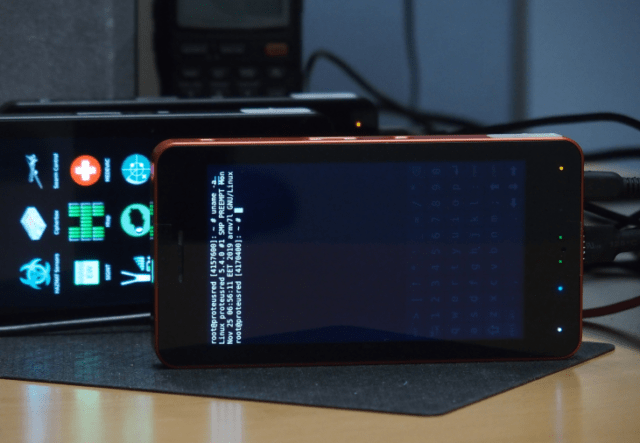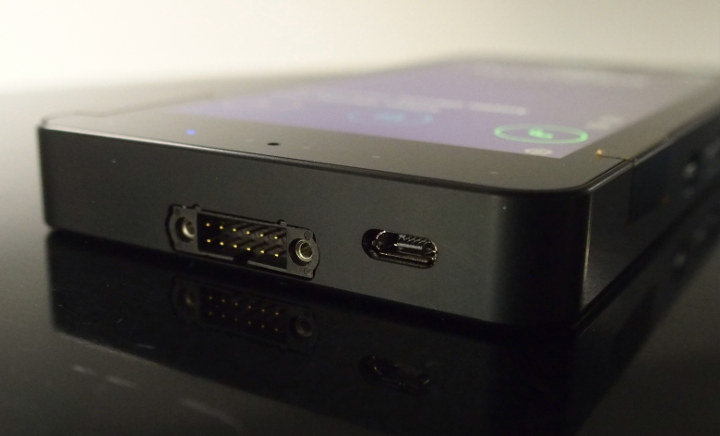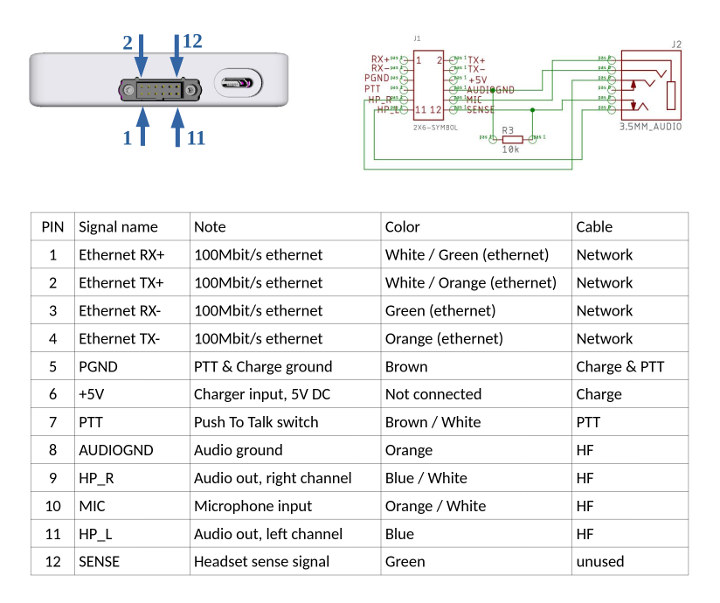ProteusDevice
XXLSEC Ltd., the developer of the Privecall-TX device, has developed a near-identical, slightly bigger ProteusDevice, which runs the Linux 5.4 based PriveOS. The ProteusDevice handheld device (“not a mobile phone”) is said to have very tight security and was developed with secure access in mind.

Background and Linux Handheld Market
The market is seeing more Linux handheld and phones such as the Purism Librem 5, the PinePhone “Braveheart” both of which are already in mass production. There are also other computing options with the handheld Pocket Popcorn Computer, which is much like the PocketChip, but decidedly improved and faster in general, as well as the Solectrix SX Mobile Device Kit which is more of a business option, for smartphone, opensource development with no cellular connectivity, but Gigabit Ethernet and USB-to-UART ports.
Some Features and Mystery Production
The ProteusDevice is in good company, and has a solid start, but is still a bit of a mystery, as to price and shipping. The phone will have end-to-end encryption and voice will be IP based. There is full protection against phishing, malware, ransomware, supply-chain attacks and unauthorized third party usage, reports XXLSEC.

ProteusDevice Specifications
The system is designed around an NXP i.MX6 ARM processor, and is equipped with 1GB RAM and 8GB eMMC. The battery has a capacity of 3500 mAh and is chargeable through the system connector or via micro USB cable.
Specifications
Device Type – Mobile Secure Computing Unit
Processor – NXP i.MX6 Arm Cortex-A9 processor
Memory / Storage
-
- 1 GB RAM
- 8GB eMMC storage
-
Auxiliary memory – 32Kbit i2c EEPROM; Onboard MicroSD, not user accessible
Physical Attributes
-
- Dimensions 160 x 78 x 15 mm
- Weight 276 grams
- Body Aluminum, anodized black
Connectors
-
- Micro USB (charging only)
- System Connector (Charge, Ethernet, Audio, Switch) – See diagram below
- External wifi antenna connector, SMA (option)
Indicators – On-display LED, user action, wifi, ETH ACT, ETH LNK, PFO, charger status
Display – 5” IPS TFT with PWM controlled LED backlight; Touch controller (GT928)
Connectivity
-
- Wired Ethernet, 100 Mbit/s with an internal magnetic transformer
- Wireless (option) SDIO interfaced WL1801 (with regulatory firmware required)
Audio
-
- Internal audio codec (SGTL5000)
- Internal microphone
- Internal speaker (with controllable amplifier)
- External HF with Mic in System Connector
Charger
-
- MicroUSB charging input
- +5 V DC charging input on System Connectors
- Charger controlled over i2c from host
- Fuel gauge Internal fuel gauge with i2c connectivity to host
- Battery voltage and temperature
- Indicates Accumulated Battery Charge and Discharge
Battery – 3,500 mAh
Operating System
-
- Linux kernel
- PriveOS for commercial developers with Linux 5.4.0
Applications
Some of the potential use cases and application areas listed by the company for the Linux handheld include critical IoT infrastructure, red team exfil tooling, authentication platform, penetration testing tool, critical comm’s, COMSEC & INFOSEC, MESH network device, and off-the-grid applications.
Further Information
No pricing as of yet, but the company has updated all the specifications on the GitHub XXLSEC ProteusDevice page.
The LinuxGizmos.com article also provides information used here as well as additional information.

Stephen started writing about technology after publishing sci-fi short stories. His first White-Paper, written in 2008, was well received and inspired him to continue writing about technology. Today he writes in the technology space full time, covering a multitude of topics. During the time he wrote part-time he edited hundreds of titles for large publishers, in science and technology. He lives in Staten Island, with his wife and children.
Support CNX Software! Donate via cryptocurrencies, become a Patron on Patreon, or purchase goods on Amazon or Aliexpress






It’s not a phone but the “system connector” is all geared toward audio (aside from hardwired ethernet).
Seems like an odd choice especially considering that microphone and speaker are aleady provided internally. It’s not a phone — but it wants to be one.
I would have expected more communication bus connectors (I2C, SM Bus, etc.) to interface with external hardware. It would have made a nice UI.